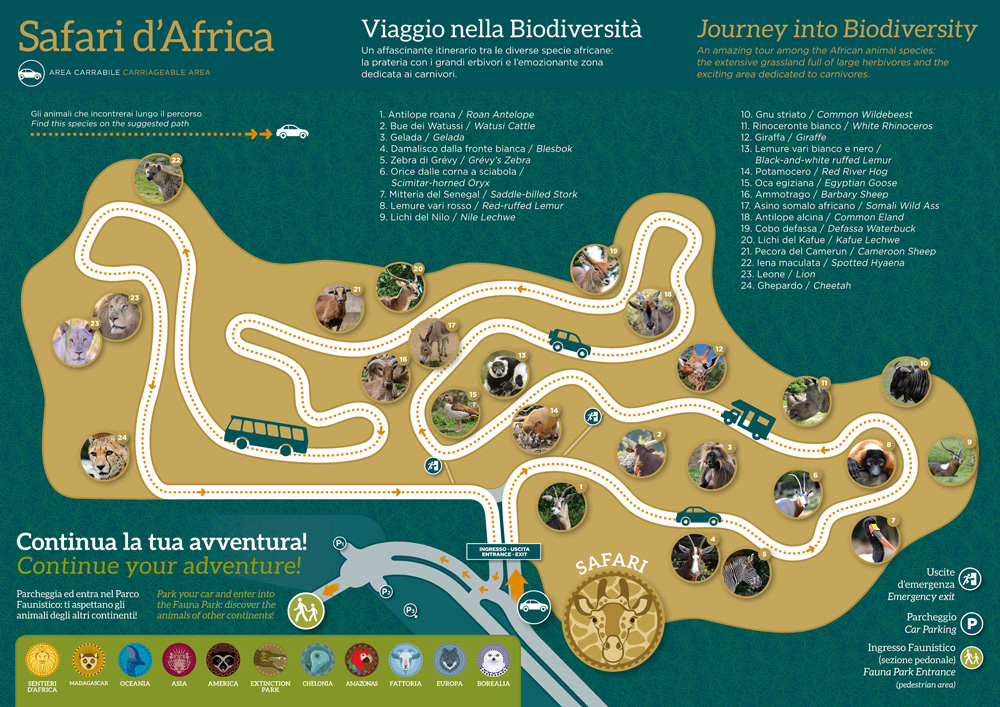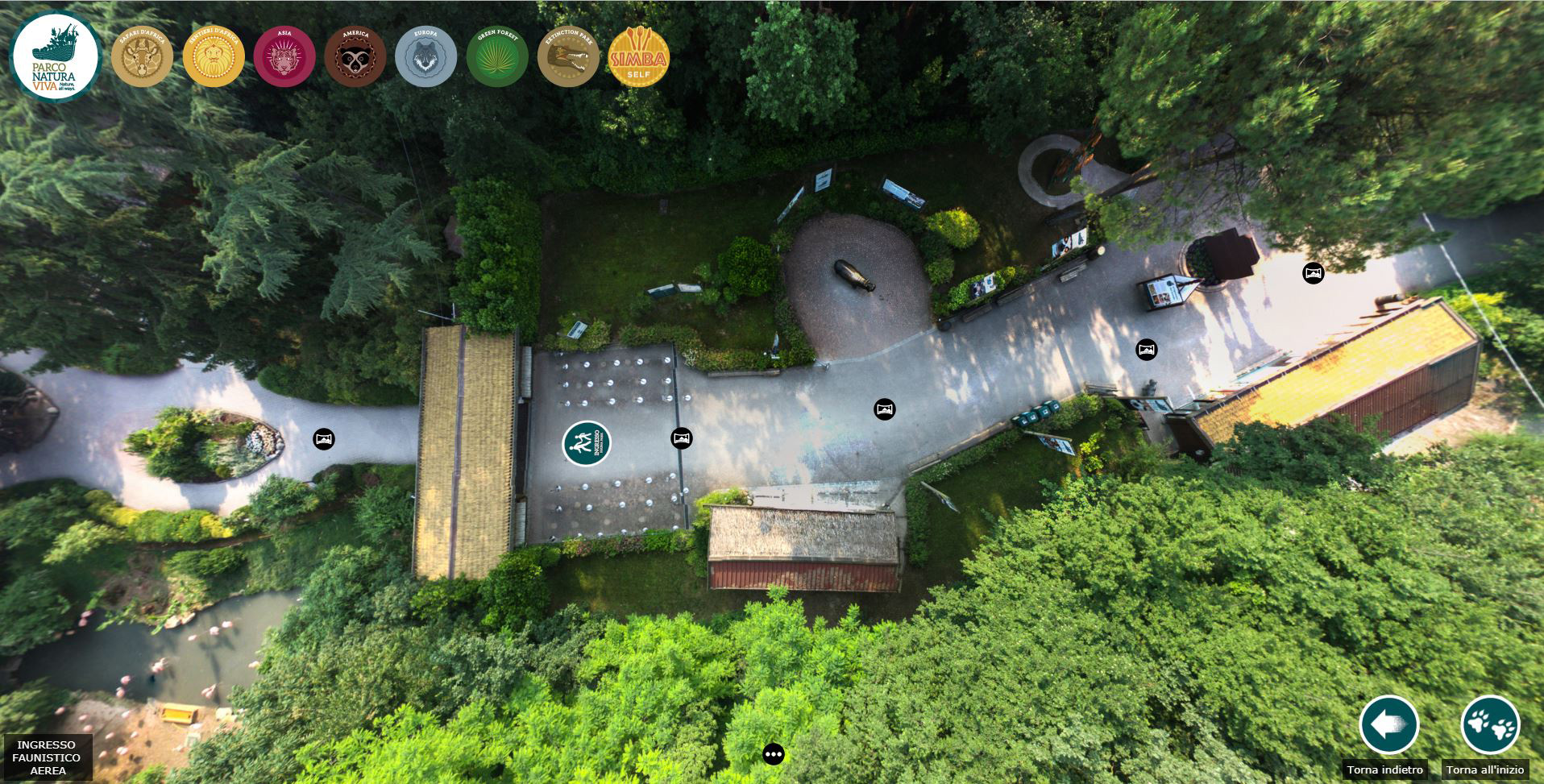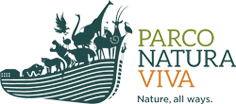PARCO NATURA VIVA RULES
For your safety and for animals wellbeing
Only few simple RULES to improve your visit and to assure animal’s wellbeing:
FAUNA PARK SECTION
- Do follow indicated route on map. Do not rise or trespass any fence. Do not enter any defended area.
- Please use waste bins, caring about triage
- Please respect public spaces and service areas. The Park reserves the right to charge visitor in case of damages due to improper and irregular use of materials and equipment.
- Pets are not allowed
- Bicycles or kick scooters are not allowed
- It is forbidden to play ball games
- It is forbidden to light fires
- No commercial use for photos allowed
- Our road system is environment-friendly, therefore we invite you to pay attention to small differences in height and the occasional presence of stones or other natural obstacles on the way; we suggest using strong shoes suitable for a possibly bumpy road.
- Take care of animal’s privacy (no knocking on windows, no screaming)
- DO NOT FEED THE ANIMALS
SAFARI PARK SECTION
- Access to the Safari Section is prohibited for convertible cars with open roofs, motor vehicles and bicycles.
- It's strictly forbitten to get out of your car
- Doors and windows must be kept closed all long the Safari tour
- Do not disturb the animals, do not feed them and do not throw anything out of the window
- You must keep your pet inside a pet carrier
- All animals you meet on the road have right of way
- Please follow the regulations strictly. The management will accept no responsibility for any damage wich may be caused to your car during the visit.
- After the visit of the Safari Park you can access to parking areas and start a new visit fo Fauna Park, if you haven't already visited it.
- Attention: if your car breaks down, sound the horn three times and please stay inside your car and wait for rescue.
Here you can find the Rules you need to follow in order to visit Parco Natura Viva
WHY CAN'T I FEED THE ANIMALS?
Like us humans, animals also need a healthy and balanced diet to stay healthy and fit. Everyday we monitor the quality and quantity of food that is given to the animals we host, not only for each SPECIES but for SINGLE INDIVIDUAL.
❌ Snacks, but much more simply an APPLE or a CAROT can cause problems for animals, not only in terms of health but also in the social balance between different individuals: they could argue and be seriously injured.
❤️ Animal welfare is our priority every day and ALL the animals entrusted to us are constantly followed by our staff of keepers, veterinarians and ethologists to monitor their health.
We ask for the collaboration of all our visitors to understand that a gesture, which may seem harmless, can cause DAMAGE, even IRREVERSIBLE.
⚠️ DO NOT feed the animals in the Park: not even a leaf, a fruit or even worse snacks. ⚠️
The only exception are the goats in the FARM: to which it is possible to administer the feed that you will find in the special balls at the vending machine.
Thank you!
What is the structure of the Park?
Parco Natura Viva is an important natural zoological garden situated in Bussolengo, halfway between Verona and Garda Lake. It covers about 40 hectares of land and it’s the house of 1.500 animals belong to over 150 species from all the world.

Parco Natura Viva’s ticket is unique, it includes both sections (Fauna Park and Safari Park), and You can buy it or at the Safari Park entrance or at Fauna Park ticket office. It’s a daily ticket.
Your visit step by step
You can find the Park’s entrance at the roundabout in Località Quercia, along the Bussolengo’s Provincial Street 27. After the entrance’s flags, You’ll find a fork in the road: on the left, You’ll reach the parking area and the Fauna Park; on the right, You’ll arrive at the entry and ticket-office of the Safari Park.
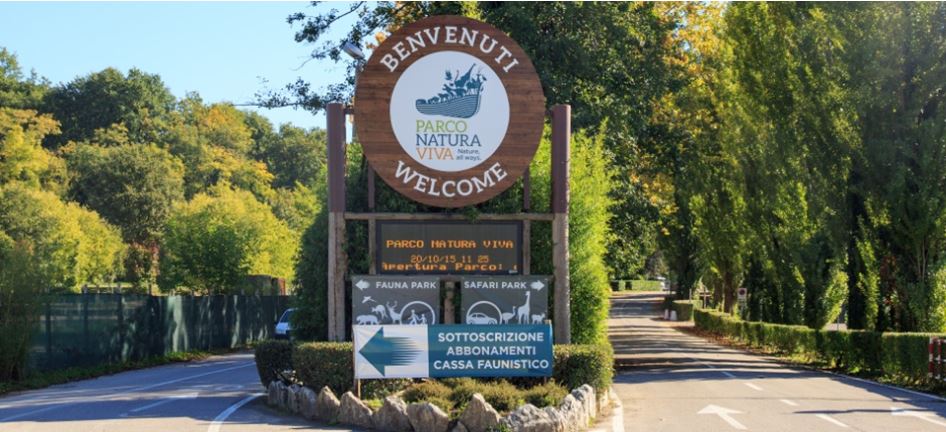
FAUNA PARK – PEDESTRIAN AREA
Once You parked your car, walk up to Fauna Park ticket-office: You could buy your ticket here (there’s only one ticket for both section of the Park-Fauna & Safari) or You could subscribe to the annual membership.
In the square, in front of the ticket-office, You can see the Pippo’s statue: this hippopotamus was the first animal of the Park, since 1969, when Parco Natura Viva opened.
In front of the statue there’s the Natura Bazar Shop, that sells all stuff You need to visit the Park and also funny gadgets.
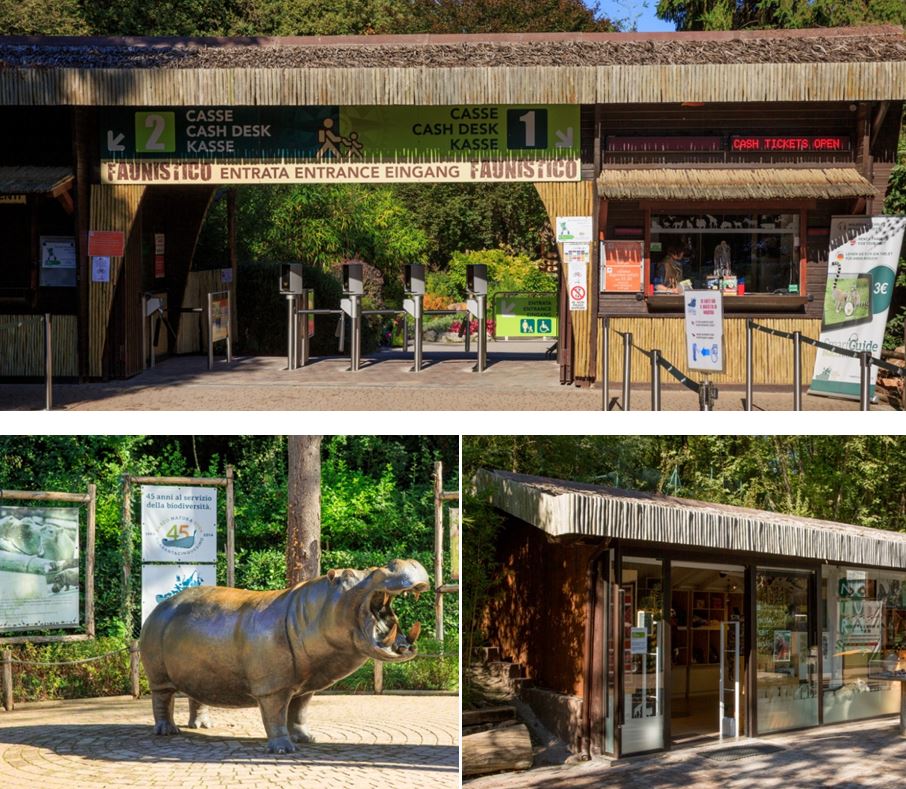
FAUNA’S ENTRY toward SENTIERI D’AFRICA
Once You enter into the Park, the first step is to reach Sentieri d’Africa. At the first fork in the road, turn right, pass Flamingo’s paddock, the toilette and some rest stops (Simba restaurant). In front of You, You’ll see the Sentieri d’Africa’s gate.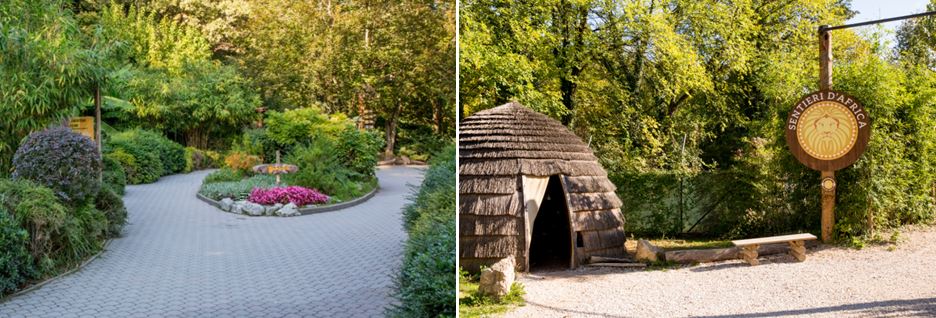
Sentieri d’Africa is like a pedestrian safari. Here You’ll admire different species of African animals. In the first big paddock live together: hippos, rhino and some nyala antelopes. You could also glimpse cheetahs in the background.
Keeping on, You’ll find the lions and chimpanzees paddocks and then You’ll reach the Oasi Gombe, a rest stop in African style near the meerkats' area.


Proceed the visit walking on a little hill toward the paddocks of L'Hoest's monkeys, Barbary macaques, springbok and sitatunga antelopes, and also the African giant tortoises.
After these paddocks, You’ll arrive at Madagascar’s entry. Here You could admire different species of lemur, including ring-tailed lemurs and the red-bellied lemurs.

At halfway road, You’ll find a circle path, Oceania’s area, where live the particular Kea parrot, the cassowary, the emu, the eastern grey kangaroo, the wallaby, the black swan and other animals originating in Oceania.
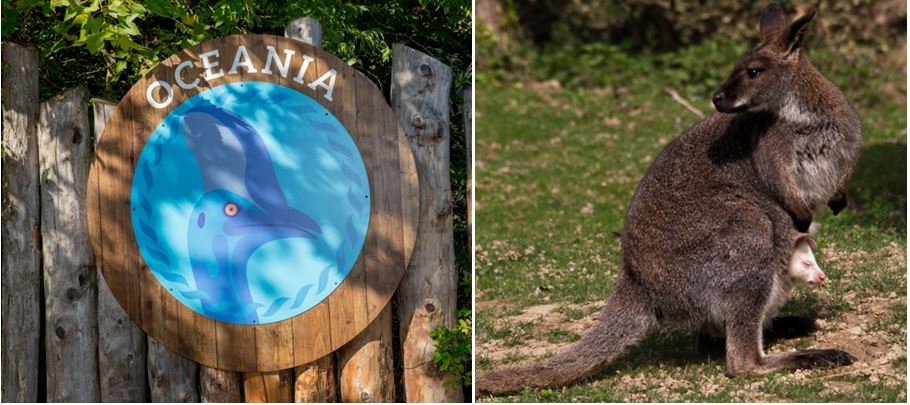
When You’ll end Oceania, You’ll return on Madagascar’s path, and You’ll see the fossa, the vasa parrots and the area dedicated to Indri, the rare lemur that can’t live in zoos and this is why the Park works on the distant conservation’s and donation’s projects.

At the end of this path, You’ll arrive, again, at Oasi Gombe: You’ll have to walk back through Sentieri d’Africa, passing in front of chimpanzees, lions and hippos paddocks.
When You’ll exit from Sentieri d’Africa, You could have a rest at the pic-nic area Animaliadi, here there’s also a playground for your kids. You could also have a lunch break at Simba self, the self-service restaurant of the Park. Now you’re ready to continue the visit to Asia area (walk towards camels paddock).

ASIA – SOUTH AMERICA – EXTINCTION PARK
The first animals You’ll see, once You’ll arrive in the Asian area, are: Bactrian camels, red-crowned Cranes and then, walking on the wood’s bridge, red pandas and muntjak deers. After the Przewalski’s horses, walk towards yurts and on the right, you’ll find the first observatory (of three) to admire the Siberian tigers.
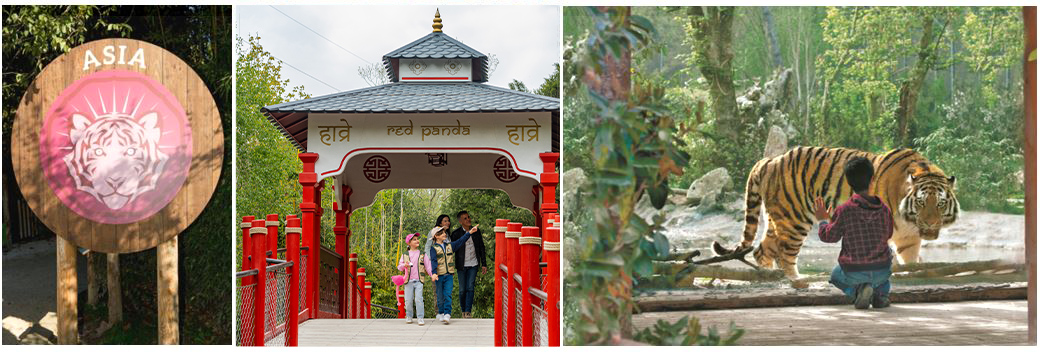
Once you’ll exit from this first observatory, turn right, and walking up, you’ll find the other two observatories for tigers (on the right) and the snow leopards area (on the left).
At the end of the little climb, there are the great aviaries where live some raptors: the bearded vulture and the Egyptian Vulture. After the wood’s bridge, on the right You’ll see the Edward's pheasant and, on the left, You’ll find the Red-headed vultures' aviary.
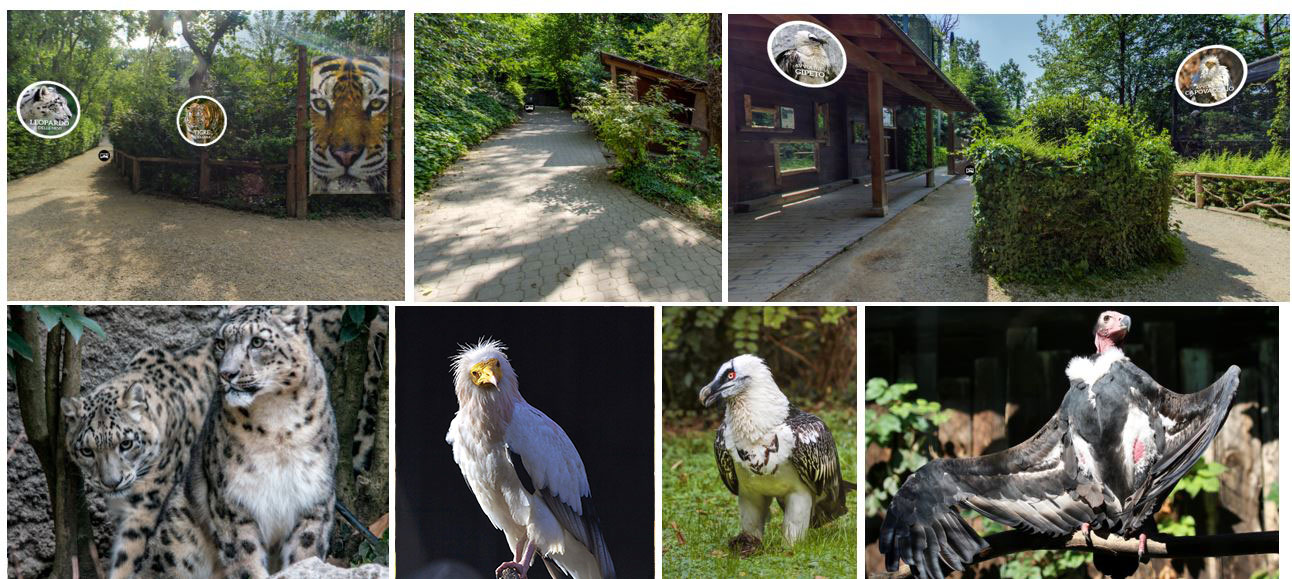
SOUTH AMERICA - EXTINCTION PARK
The next step, upon the hill, is the South America area. Here live many species of little monkeys.
In front of Extinction Park entry, You could have a break at the picnic area (there are toilettes and vending machines).

When You see the Extinction Park’s sign, stay on the right: You’ll see the models in chronological order, from the first animal surfaced on the Earth, to first dinosaurs, until the “giants”, like Spinosaurus and T-Rex. The next models are the great mammals of the past, and, after the Indricotherium, You’ll find a little climb on the left that leads to Chelonia, the area of the Park dedicated to turtles and tortoises conservation. Walking down You’ll arrive to the most recent extinctions and to the end of Extinction Park.

Once You’ll exit the Extinction Park, You will be in South America, again. Stay on the right e walk down from the hill, You’ll find the two-toed sloth, the ocelots and, straight on at the crossroads, prairie dogs. At the end of this short path, go back and, at the crossroads, turn right: You’ll arrive at a corridor which You’ll admire the scarlet ibis and small monkeys. On the right, there’s the giant anteater!
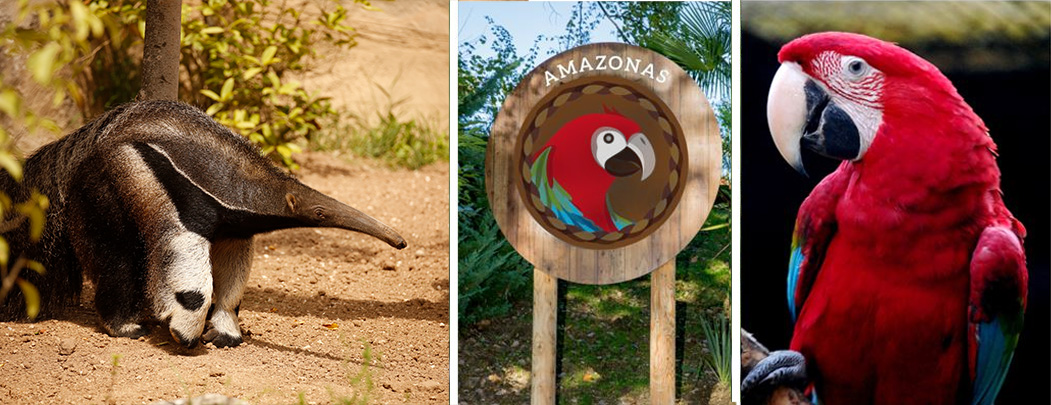
The next area is Amazonas: the huge aviary of Macaws. Here live different species: Red-and-green macaw, blue-and-yellow macaw, military macaw, the great green macaw, the Scarlet macaw...
The path goes down and, at the turn, there’s the Manas Fast Food area: here You can find toilettes, playground and Manas Fast Food.
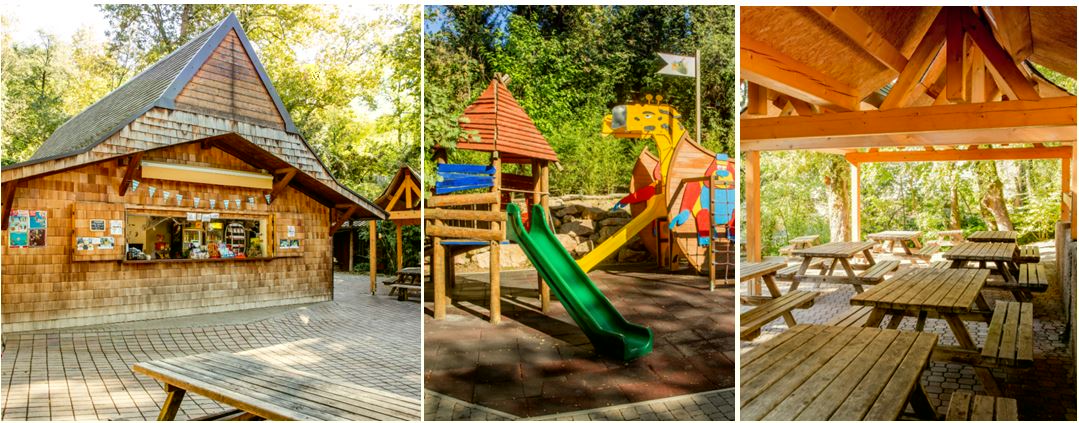
HOUSE OF GIANTS

At the base of the hill is the tropical greenhouse: House of Giants. Dedicated to gigantism and dwarfism in the animal kingdom, House of Giants includes some models of giant species extinct in the past, and hosts many live specimens of rare species! The dangerous Komodo dragons, the poison-dart frogs, the dwarf crocodiles swimming in the midst of many colorful fishes, the huge giant Seychelles tortoises (if they are not in the greenhouse, it means that they went for a walk in the front lawn!), the long green anaconda, dozens of colorful giant butterflies, the mysterious leaf-cutting ants and finally, behind the aquarium of the pacu fish, the fast and funny giant otters!
FARM

Then the Farm awaits you: an area where you can enter, and meet up close, goats, and many other pets such as guinea pigs, alpacas, sheep ... If you do not want to enter the Farm, you can overcome it through the uphill path on the right After crossing the farm towards the hill, on the left, take a small detour to see the maned wolf.
EUROPE – BOREALIA
Now You will see the directions to the Europe’s path: a way that permits You to see, in a wonderful oak’s wood context, the areas of: Eurasian lynx, arctic wolf, wild cat, and urial
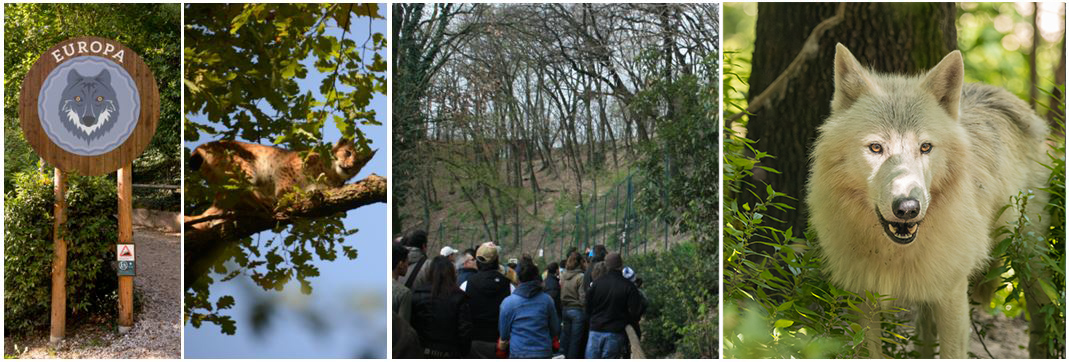
At the end of the path stay on the right at the crossroads: You will enter Borealia, the area dedicated to the animals from cold countries. Here You could see the Snowy Owl, the Siberian eagle owl, reindeers, and a picnic area under olive trees. Going down on the path You will find the European bison’s area. This species is important for the Park because we are involved, personally, in the Conservation Project to reintroduce it into nature.
You can also see the aviary of the Ural Owl and the northern Bald ibis.
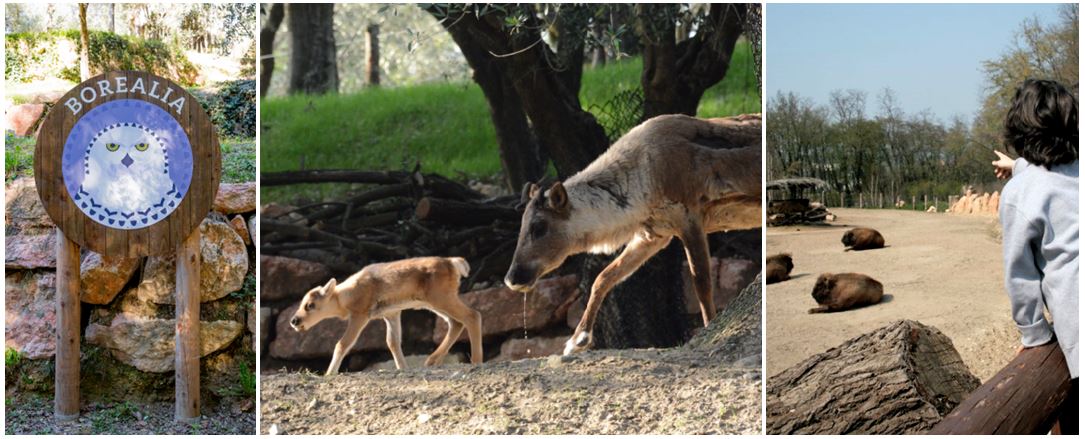
Returning on the entrance of the Fauna Park You could admire the Greater Flamingos and, if You want, proceed to the Fauna Park’s exit, on the right.
END OF FAUNA PARK
LET'S VISIT THE SAFARI PARK
Once you've finished the visit to the pedestrian area, go back to the parking and pick up your car and go to the entrance of the Safari park (take the right at the crossroads). Show your ticket at the entrance, read with attention the rules that you'll receive and.. enjoy your visit: you will admire antelopes, zebras, gelada baboons, wildebeests, giraffes, lemurs, and the saddle-billed stork... when the road climbs up on the hill you'll find other antelopes' species, Cameroon sheep, the Somali wild ass and then you'll arrive in the carnivores area: spotted hyaena, lion, and cheetah and then the exit.If you don't have your own card, JEEP SAFARI SERVICE is available.

REMINDER FOR YOUR VISIT
ENJOY YOUR VISIT!
Parco Natura Viva is divided in two main sections, both included in the daily ticket.
The FAUNA PARK is a pedestrian area, while the SAFARI PARK is a carriable area.

About Fauna Park (sezione Faunistico):
- it includes more than 90% of all the animals of Parco Natura Viva
- about 4 km walking
- is divided in Macro Areas, related to Continents: Africa, Oceania, Asia, America, Europa + Extinction Park
- here you can find Restaurant, Fast Food, Playground and Toilettes.
Consulta la
GUIDA ALLA VISITA
per pianificare al meglio la tua visita al Parco!
SENTIERI D'AFRICA

Un percorso innovativo, un vero e proprio "safari pedonale" che permette al visitatore un'esperienza immersiva: camminare senza pericolo a poca distanza da ippopotami, rinoceronti e antilopi, poter ammirare i leoni da una gigantesca vetrata e provare il brivido di ammirarli da vicino, vedere bellissimi primati come scimpanzé, bertucce e cercopitechi in un'habitat naturale, e scoprire i simpatici suricati tramite vetrate che permettono di spiare la loro vita quotidiana. Il grande reparto dove antilopi sitatunga, springbok e gru coronate vivono assieme sembra un angolo di paradiso. Il bar Gombe, costruito in modo da riprodurre un lodge africano, permette relax e ristoro. Subito dopo segue la sotto-area Madagascar, dove è possibile esplorare la biodiversità di questa grande isola ammirando diverse specie di lemuri: lemuri catta, lemure del bambù, lemure dal ventre rosso, il misterioso fossa e il pappagallo vasa.
OCEANIA

Il percorso Oceania permette di vedere strani animali dall'Australia alla Nuova Zelanda. Qui abitano i pappagalli kea, i giganteschi emù, i simpatici wallaby che così tanto ricordano canguri in miniatura, il pericoloso uccello casuario, la gru antigone, il cigno nero e altri anatidi australiani.
ASIA

Un'ampia area è dedicata agli animali del continente asiatico, così vasto e che ospita così tanti animali celebri e a rischio di estinzione. Immersi nel bosco, tra i cespugli di bambù, si potranno ammirare panda rosso, cervo muntjak, tigre siberiana, cammello della Battriana, cavallo di Przewalski, leopardo delle nevi, cervo di Padre David, antilope cervicapra e inoltre grandi ucelli eurasiatici, come l'avvoltoio gipeto, il capovaccaio, la cicogna nera, l'avvoltoio reale indiano e altri. Annidato tra la vegetazione, il fast food tematico asiatico "Manas" offre, con la sua area giochi, un momento di riposo e relax sotto l'ombra di giganteschi alberi.
AMERICA

L'area americana, situata su una collina, permette al visitatore di perdersi tra le moltissime specie ospitate che ben rappresentano l'incredibile biodiversità del continente. Qui abitano molte specie di piccole scimmie, come i tamarini edipo, tamarini mani rosse e tamarini imperatore, saki faccia bianca e saimiri, oppure strani uccelli come l'hocco dall'elmo o l'hocco maggiore, l'elegante ibis rosso, per poi passare a ocelot e orso dagli occhiali. Segue la sotto-area Amazonas, che ospita coloratissimi pappagalli sudamericani: ara macao, ara gialla e blu, ara dalle ali verdi, ara militare e diverse amazzoni e conuri.
EXTINCTION PARK

In un viaggio nel tempo si potrà ripercorrere la storia della vita attraverso ricostruzioni accurate dei più spettacolari animali estinti. Le ricostruzioni sono in grandezza naturale e basate sulle più recenti scoperte scientifiche e frutto della collaborazione tra paleontologi, artisti e modellisti. Dai primi animali che popolarono la terraferma come ichthyostega, meganerura, arthropleura, diplocaulus, dicynodon, cynognatus, seguono i primi dinosauri: stegosaurus, camptosaurus, coelophysis, gojirasaurus, eubrontes. Non possono mancare i dinosauri più recenti e più spettacolari: iguanodon, elasmosaurus, spinosaurus, pteranodon, trodon, tyrannosaurus, parasaurolophus, triceratops e altri. Segue poi l'era dei mammiferi estinti: indricotherius, smilodon, megaloceros, tilacino e per finire le estinzioni dell'ultimo secolo, come dodo e colomba migratrice.
EUROPA

Scopri gli animali dell’Europa, l’area del Parco Natura Viva dedicata agli animali che abitano assieme a noi il continente europeo: lupo grigio, lince, gatto selvatico, muflone, avvoltoio grifone, bisonte europeo, ibis eremita e tanti altri! Situata nella zona alta del Parco Faunistico, l’Europa è un percorso alla scoperta della biodiversità locale, dove puoi avvistare anche le batbox per i pipistrelli oppure le cassette nido per gli uccelli selvatici che trovano rifugio nel bosco di querce. Segue la sotto-area Borealia, dedicata invece agli animali del freddo: renna, gufo delle nevi, oca delle nevi e gufo reale siberiano!
Download FAUNA PARK RULES
Parco Natura Viva is divided in 2 sections, both included in the Daily Ticket.
The FAUNA PARK is the pedestrian area (4 h), the SAFARI PARK (about 30 mins) is to be visited on board of your car.
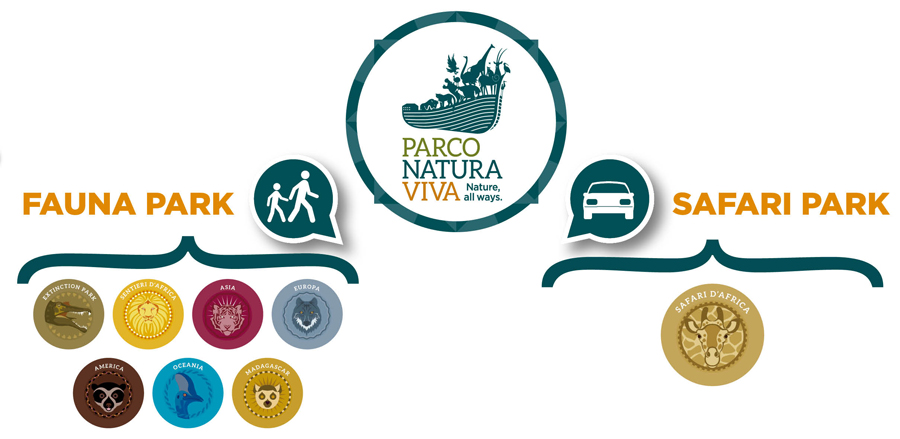
You can visit the Safari Park on board of your own vehicle (car, campers or busses, even double one) just like an exciting African Safari. In this tour you'll see, just a few steps from your car's windows: elegant giraffes, pretty zebras, antelopes, exciting lions, hyenas and cheetahs living with no fences in a completely wild environment.
 Italiano
Italiano English
English Deutsch
Deutsch


